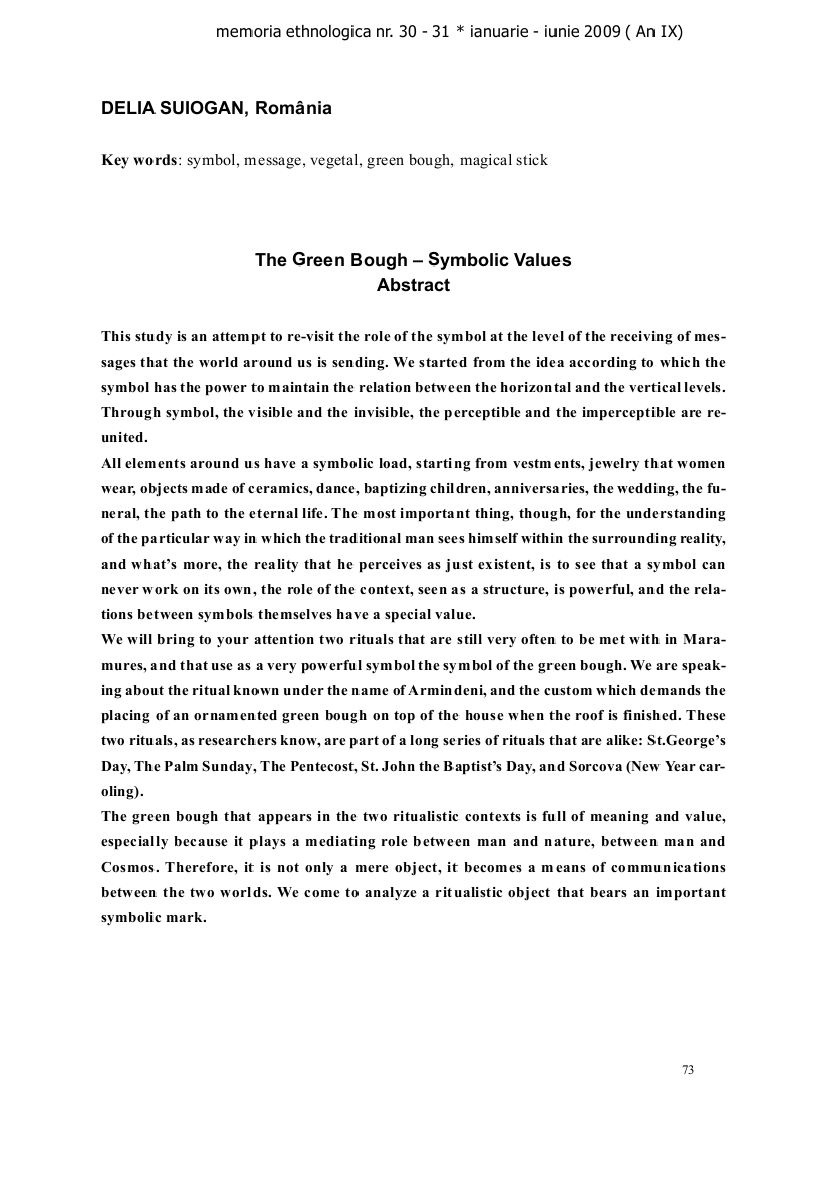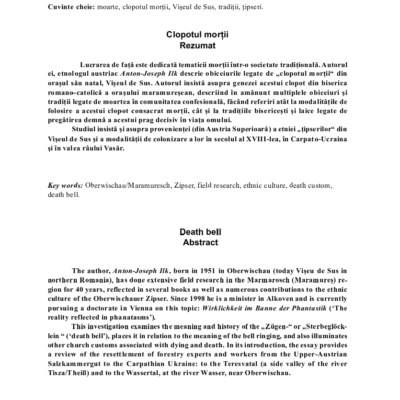Trebuie să fii autentificat pentru a publica o recenzie.
Ramura verde – valori simbolice
The Green Bough – Symbolic Values
Abstract
This study is an attempt to re-visit the role of the symbol at the level of the receiving of messages
that the world around us is sending.We started from the idea according to which the
symbol has the power to maintain the relation between the horizontal and the vertical levels.
Through symbol, the visible and the invisible, the perceptible and the imperceptible are reunited.
All elements around us have a symbolic load, starting from vestments, jewelry that women
wear, objectsmade of ceramics, dance, baptizing children, anniversaries, the wedding, the funeral,
the path to the eternal life. The most important thing, though, for the understanding
of the particular way in which the traditionalman sees himself within the surrounding reality,
and what’s more, the reality that he perceives as just existent, is to see that a symbol can
never work on its own, the role of the context, seen as a structure, is powerful, and the relations
between symbols themselves have a special value.
We will bring to your attention two rituals that are still very often to be met with in Maramures,
and that use as a very powerful symbol the symbol of the green bough.We are speaking
about the ritual known under the name ofArmindeni, and the customwhich demands the
placing of an ornamented green bough on top of the house when the roof is finished. These
two rituals, as researchers know, are part of a long series of rituals that are alike: St.George’s
Day, The PalmSunday, The Pentecost, St. John the Baptist’s Day, and Sorcova (NewYear caroling).
The green bough that appears in the two ritualistic contexts is full of meaning and value,
especially because it plays a mediating role between man and nature, between man and
Cosmos. Therefore, it is not only a mere object, it becomes a means of communications
between the two worlds. We come to analyze a ritualistic object that bears an important
symbolic mark.
memoria ethnologica nr. 30 – 31 * ianuarie – iunie 2009 ( An IX)
73





Recenzii
Nu există recenzii până acum.